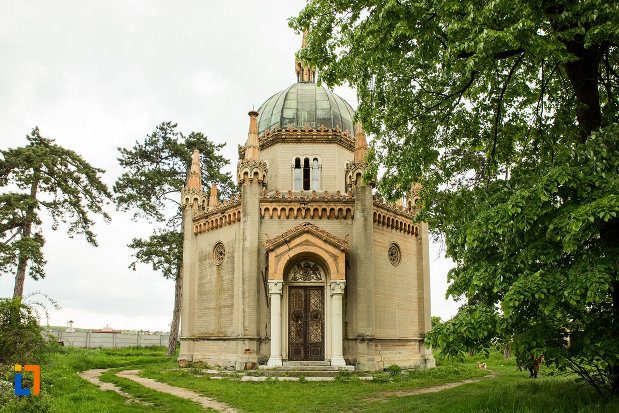

The mausoleum – chapel was built between 1865 – 1868 by the architect Theofil von Hansen, also responsible for the extraordinary chapel from the Știrbey property from Buftea. At a closer look, the two esthetic constructions are very much alike. The one from Dolj was built in the neo – gothic style with Italian influences.
The building was built up by Dimitrie Filisanu, an aristocrat who marked the evolution of the city, becoming a real historical personality.
The architect got his inspiration at building the mausoleum from a French model.
The historical ensemble is composed by a mausoleum, surrounded by a wall from the premise. Although normally you cannot enter inside the building, it can easily be passed through the broken wall which surrounds the mausoleum
Dimitre Filișanu, a man with a bright mind and a soul full of a clean an true devoutness to God, hardened even as a child in the fight for defending the ancient fireplace and of the faith, he vigorously put his print on the history of the locality Filiași. Over the course of time, after 260 years (in 1896) another Filișanu, also Dimitrie, founds at Filiași a wonderful construction, the Filișanu Chapel. Worked with French masters, this chapel is the soul legacy of Smaranda and of Dimitrie Filișanu, left to the inhabitants of this establishment, who are proud of the fact that in this locality there were born and there lived such people. Filișanu, Dumitru, political man, philanthropist (born in 1808 in Craiova – deceased on the 27th of May 1883), Tatomirești (buried in the family chapel from Filiași), descendant of Dumitru Filișanu I, he participated at the revolution from 1848, the Union of the Principalities of 1859.
He had the degrees of cavalry commander (1839), cupbearer (1841) and great aga (1850).
In the year 1839 he was the president of the Magistrate from Craiova. After the starting of the revolution from 1848 he was named the leading of the county of Dolj.
He was part of the commission regarding the freeing of the gypsy slaves, for the five counties of Oltenia.
In the year 1859 he was chosen a depute from the part of the county of Mehedinți where he had properties.
He gathered book in the libraries from Craiova and from Bucharest, about whose value there is still talk even in the present.
He endowed with books the foundations of his families from Bâlta, Tatomirești and Filiași.
The chapel built by him at Filiași, which resisted to the test of time, proved to be a historical monument of the country.
He was preoccupied about building a hospital at Filiași which was organized, after his death, in his family’s mansion from Filiași, donated to the state with testamentary clause.
